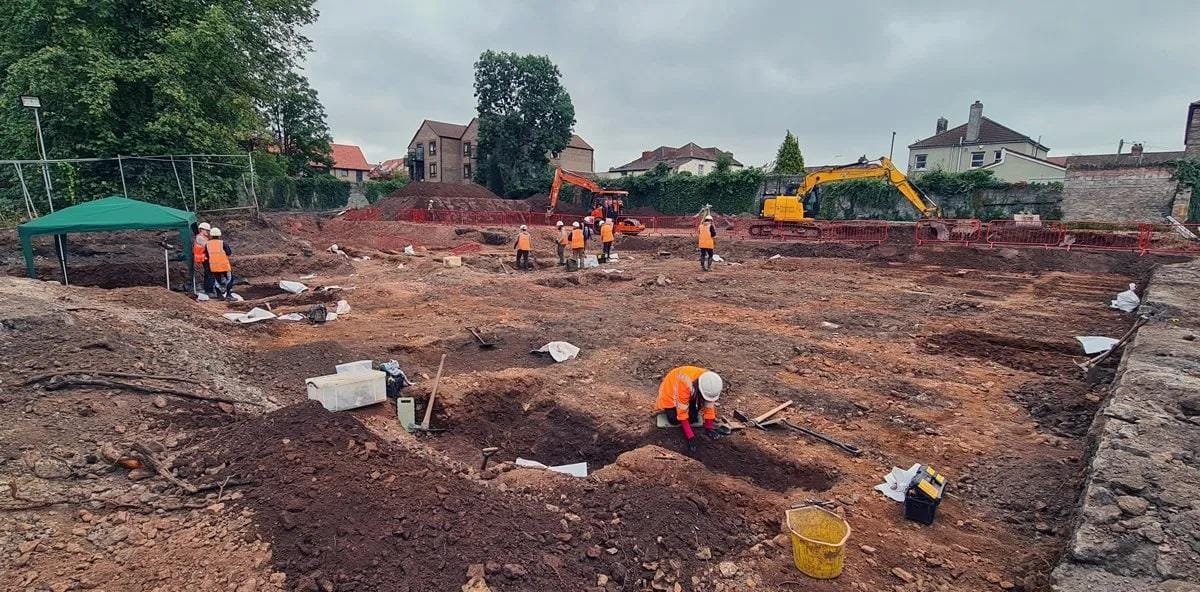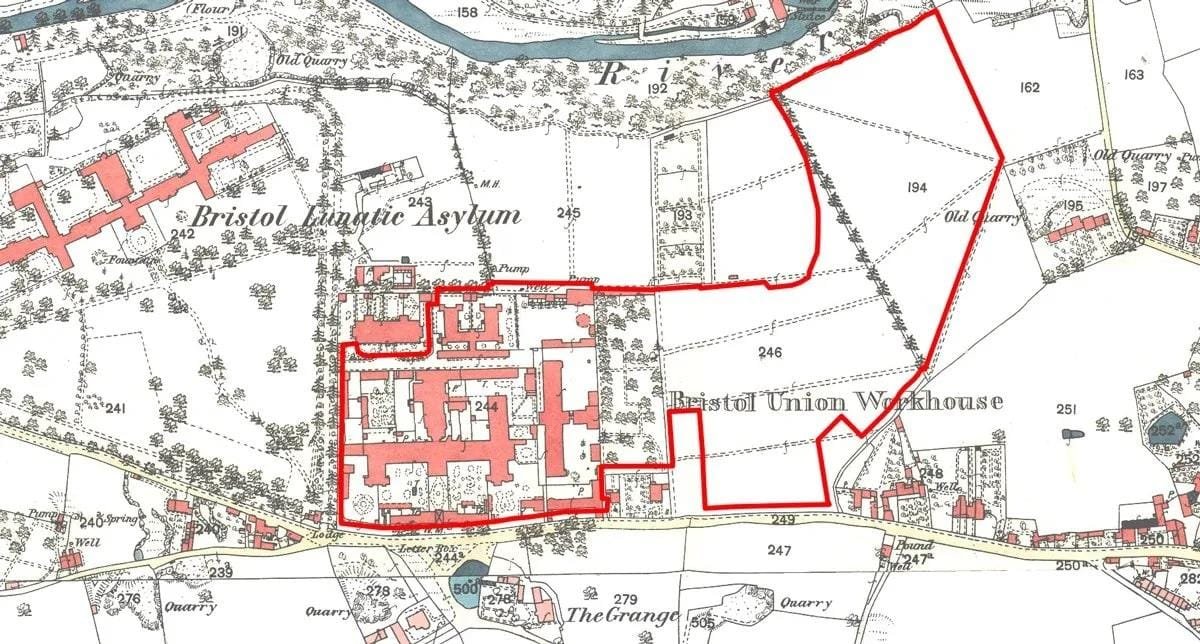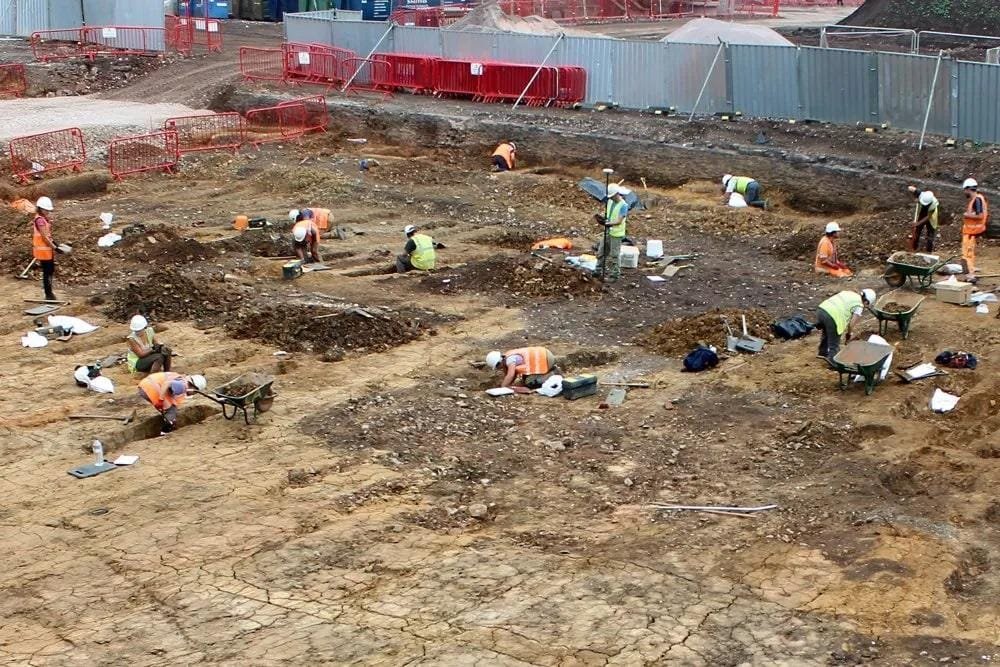Excavations at the historic Blackberry Hill Hospital site in Stapleton, Bristol, have unearthed significant remains, shedding light on the challenging lives of those who lived, suffered, and died there over the centuries.
 Archaeologists at work uncovering graves at Blackberry Hill. Credit: Cotswold Archaeology
Archaeologists at work uncovering graves at Blackberry Hill. Credit: Cotswold Archaeology
Led by Cotswold Archaeology between 2018 and 2023, this work, funded by Vistry Group, began as a precondition to the site’s redevelopment for housing but has since revealed invaluable information about the city’s past.
The site’s complex history spans multiple roles, from Stapleton Prison to Stapleton Workhouse, and later as Blackberry Hill Hospital. Initially established in the late 18th century, the area served as a prisoner-of-war camp, known as Stapleton Prison, primarily housing captured sailors from Britain’s wars with France, Spain, Holland, and the United States.
As Richard Leaman, Diocesan Secretary of the Diocese of Bristol, explained, the historical significance of Stapleton as “one of the earliest examples of a prisoner-of-war camp in Britain” precedes even the Norman Cross camp. The prison era ended with the conclusion of the Napoleonic Wars, after which the site transitioned through various roles amid Britain’s evolving social challenges.
 1st edition OS map (1880), showing the layout of Blackberry Hill and surrounding areas. Credit: Cotswold Archaeology
1st edition OS map (1880), showing the layout of Blackberry Hill and surrounding areas. Credit: Cotswold Archaeology
In 1832, amidst a devastating cholera outbreak across the United Kingdom, the prison was repurposed into a hospital in an attempt to contain the spread of the disease, which claimed over 50,000 lives. This initial healthcare function was short-lived, however, as in 1837 the facility transformed again into the Stapleton Workhouse, intended to shelter Bristol’s impoverished. While the workhouse was theoretically a place of refuge, the reality was often harsh.
According to Cotswold Archaeology, many who found themselves in the workhouse endured extreme poverty, neglect, and hardship. These insтιтutions, often overcrowded and marked by poor conditions, inspired Charles Dickens’s Oliver Twist, depicting the systemic struggles faced by the vulnerable of Victorian society.
The excavation team uncovered over 4,500 unmarked graves, the majority from the workhouse period, providing a stark reminder of Bristol’s darker past. These remains, discovered with respect under a Burial Licence from the Ministry of Justice and a Faculty from the Diocese of Bristol, represent the lives of countless individuals who lived in deprivation. Richard Leaman described the project’s handling of these remains as “reverential and lawful,” emphasizing the effort to honor the site’s past. A marker will memorialize the graves, and a final ceremony will accompany the reburials.
 The team excavating the former workhouse site. Credit: Cotswold Archaeology
The team excavating the former workhouse site. Credit: Cotswold Archaeology
Ongoing studies of select remains aim to deepen understanding of life, health, and mortality in 19th-century Bristol. Researchers are analyzing the remains alongside personal items found in the graves, piecing together stories that reflect the challenges faced by the poor and sick of Victorian-era Bristol. The study also hopes to confirm whether any of the burials belong to prisoners from the site’s earlier prison era.
Blackberry Hill’s layered history, spanning over two centuries, makes it a significant archaeological site that chronicles the evolution of public health, social welfare, and incarceration in Bristol. The excavation is ongoing, with results expected to be published by Cotswold Archaeology in 2026.





